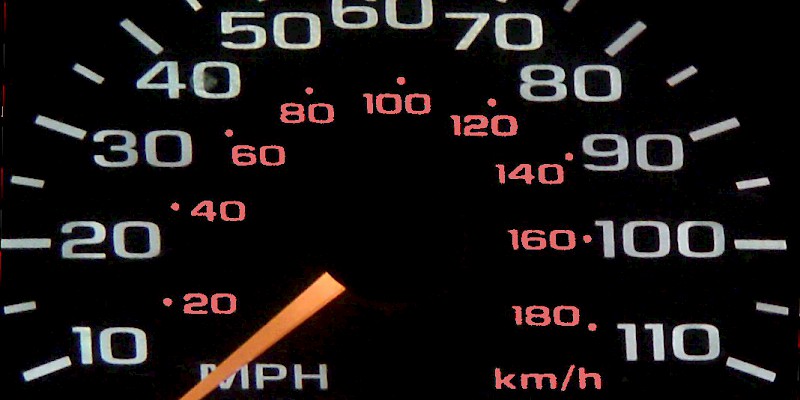Metric & imperial distances

Miles and kilometers, feet and meters, and so on
OK, the Brits has split the difference on measurements.
Road signs still use miles and yards (and speed limits are in miles per hour), but otherwise most measurements are supposed to be in metric.
Let's start big and go smaller.
Converting kilometers and miles
| Km | Miles |
| 1km | 0.62mi |
| 2km | 1.24mi |
| 3km | 1.86mi |
| 4km | 2.46mi |
| 5km | 3.11mi |
| 6km | 3.37mi |
| 7km | 4.35mi |
| 8km | 4.97mi |
| 9km | 5.59mi |
| 10km | 6.21mi |
| 50km | 31.07mi |
| 100km | 62.14mi |
| Miles | Km |
| 1mi | 1.61km |
| 2mi | 3.22km |
| 3mi | 4.83km |
| 4mi | 6.44km |
| 5mi | 8.05km |
| 6mi | 9.66km |
| 7mi | 11.27km |
| 8mi | 12.88km |
| 9mi | 14.48km |
| 10mi | 16.09km |
| 50mi | 80.47km |
| 100mi | 160.93km |
At least this converThis conversion is easy enough to do in your head. A kilometer (km) is equal to 0.62 miles, and a mile is 1.61 km.
OK so it's not THAT easy. Still, doing a rough calc in your head isn't that hard. For kilometers to miles, just break it into two bits: 50% plus 10% (which totals 60%, or 0.60), then round up a smidge for that extra 2% (the 0.02).
That sounds more complicated than it is: Say you're looking to convert 80 km. OK, so to get 50% you just cut that in half, which is 40. Tuck that away in a crevice of your cerebellum for a moment.
Now take 10% of the original 80—which is 8—then add that to the 40 and you get 48. Round up "a smidge" to cover that extra 2% and you get 50. That means 80 km is roughly 50 miles (actually, it's 49.6, so close enough).
Here, I'll make it easy for you with the table to the right.
Frankly, you'll rarely ever need to convert the other way, unless you want to say to someone in Europe something along the lines of "I live 20 miles outside of Boston," only put it in kilometers terms so he understands where your suburb is. No biggie. Ten miles is about 16 kilometers, so tell him you live 32 km from Boston. (This is assuming, of course, he has more than a vague sense of where Boston is in the first place.) That cheat sheet is to the right.
The yardstick by which meters are measured
Thank heavens for the yardstick. You can point with it, you can rap people in the knuckles with it, you can even measure stuff with it, so long as the stuff in question is less than three feet long.
And it's also about one meter long, so just picture a yardstick and you know what a meter looks like. Well, roughly.
| Cm | Inches |
| 1cm | 0.4in |
| 2cm | 0.8in |
| 3cm | 1.2in |
| 4cm | 1.6in |
| 5cm | 2in |
| 6cm | 2.4in |
| 7cm | 2.8in |
| 8cm | 3.2in |
| 9cm | 3.6in |
| 10cm | 3.9in |
| 11cm | 4.3in |
| 12cm | 4.7in |
| Inches | Cm |
| 1in | 2.54cm |
| 2in | 5.08cm |
| 3in | 7.63cm |
| 4in | 10.16cm |
| 5in | 12.70cm |
| 6in | 15.24cm |
| 7in | 17.78cm |
| 8in | 20.32cm |
| 9in | 22.86cm |
| 10in | 25.40cm |
| 11in | 27.94cm |
| 12in | 30.48cm |
Actually, 1 meter is 3.3 feet—a bit longer than a yard. So 10 meters is equal to 33 feet, or 11 yards, which is enough for a first down (only they play soccer in Europe, so that little joke wouldn't work).
100 meters is 330 feet (or 110 yards), 1,000 meters is 3,300 feet (or 1,100 yards).
One thousand meters is also 1 kilometer, which is 0.62 miles; see above.
Give a man an inch, he'll take about two and half centimeters
I can't think of a time when I've had to use inches or centimeters in any discussion in Europe, much less needed to convert between the two, but just to be thorough:
One inch is equal to 2.54 centimeters (make it two and a half).
One cm is 0.4 inches.
That means 12 inches is 30.48 cm (just pretend it's 30). We call that "a foot"—and so do the Brits—but contiental Europeans don’t have a separate word for something of that length; they'd just say "30 centimeters" or maybe "a third of a meter."
Then again, since they don’t really eat hot dogs, I guess they don't need a term for foot-long.






